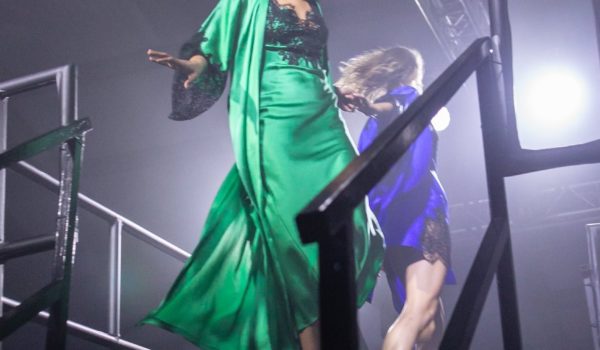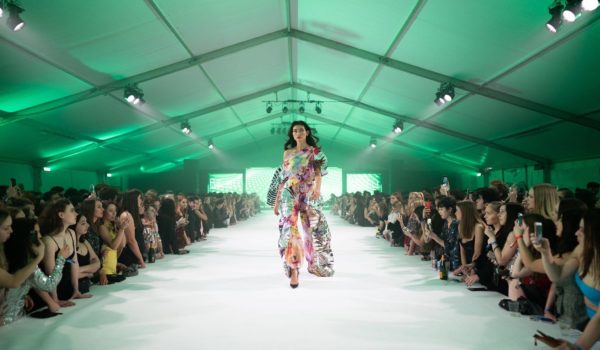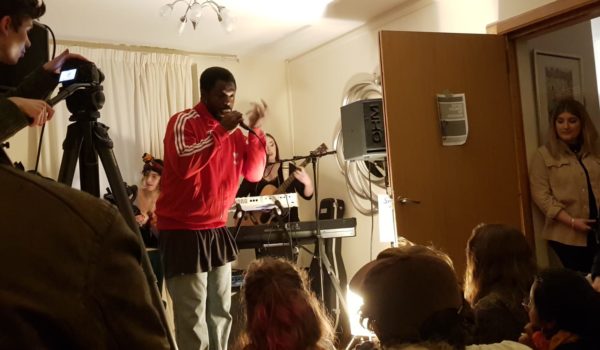In a genre that seemed to revolve around binaries – Black versus white, east coast versus west coast, and queens versus hoes – in 1998 a twenty-something, up-and-coming hip-hop artist released an album that would transcend dichotomies and strict categorisation, embracing the messy grey area in-between.
Ms. Lauryn Hill or L-Boogie was, and is, a musician of contradictions. She exists in the public consciousness as both hero and villain. She is the independent singer, rapper, writer, and producer; underused in her time with the Fugees and heralded to be the next Nina Simone. But also, she’s the ‘soulless-diva’, who is in and out of court for under-crediting the musicians who helped create the album that made her name, who leaves adoring fans waiting hours for gigs, if she turns up to them at all. [1]
Ms. Hill’s music is as difficult to pin down as her persona: incorporating contemporary hip-hop beats and old-school soul vocals, with a bit of reggae thrown in for good measure; contrasting gospel-inspired lyrics with her cutting and dexterous emceeing; working with both other young prodigies such as D’Angelo or the then-unknown John Legend, as well as seasoned musicians such as Carlos Santana. The concerts she did turn up for, for example, her Brixton Academy gig in ‘99, dramatized this range of conflicting influences in the form of a playoff between her band and her DJ. ‘Hill and the band playing old soul numbers’ and ‘the DJ scratching records in a display of turntable finesse,’ demonstrating the ‘kind of cultural clash that makes her stand out.’ [2] Whichever way you define Ms. Hill, and her debut (and only) studio album, The Miseducation of Lauryn Hill, it is undeniable that both her product and persona ‘challenged the norm and introduced a new standard’ of hip-hop. [3]
Ms. Hill’s nuanced musical and cultural approach to hip-hop became the soundtrack to a ‘spanking new Black feminism’, put forward by journalist and academic Joan Morgan in her book When Chickenheads Come Home to Roost: A Hip-Hop Feminist Breaks It Down. [4] Hill’s music was so intrinsically related to and influential on Morgan’s memoir-come-manifesto, that in 2018 she wrote a portrait of the album and artist, She Begat This, a book celebrating the twentieth anniversary of The Miseducation of Lauryn Hill. (Both of which are amazing, entertaining and informative reads- would highly recommend!)
Morgan describes hip-hop feminism as a movement ‘like (hip hop) music, one that samples and layers many voices, injects its sensibilities into the old and flips it into something new, provocative and powerful.’ [5] A feminism that embraced contradictions. That understood that much of hip-hop culture was derogating to women ‘fuelled by the machinations of young men that were often toxic,’ but also appreciated that it was the very same music and ‘young men that we loved.’ [6] It is ‘a feminism brave enough to f*ck with the grays.’ [7] While Lauryn Hill was forging a space in hip-hop music for young Black women, Joan Morgan was claiming their place within its wider culture. In the preface to She Begat This, journalist Kierana Mayo writes that Morgan provided ‘the spot-on curriculum for the Hip-Hop Women’s studies 101 course Hill had already preregistered us for’. [8] If Morgan’s book was Hip-Hop feminism’ gospel, Miseducation was the burning bush.
To truly appreciate the importance of Hill’s music to the wider genre, one must understand the landscape of hip-hop in the late ‘90s. The rivalry and the subsequent murders of Tupac and The Notorious B.I.G in ‘96 and ‘97 respectively is reflective of the tension and violence within the genre. The music valorised machismo, money and misogyny. However, hip-hop was also an important site of resistance, being rooted in the oppression of Black urban communities. It was an outlet for suffering, but predominately male suffering. Cultural critic Bakari Kitwana writes that the overwhelming tone was that of misplaced aggression, suggesting that “the very same contempt that young black men held for racist policing, high incarceration rates, and limited employment options was also directed at black women.” [9]
The few women who did find success in popular hip-hop, notably Lil Kim and Foxy Brown, rose to fame by mirroring the hyper-masculinity of their male counterparts. Lil Kim raps in ‘Can You Hear Me Now’ “Lil’ Kim’s in charge// “Got a big d*ck// I’ll bone you out,” using her ‘metaphorical penis to assault her opponents.’ [10] The femininity that did get portrayed was as extreme as the genre’s notion of masculinity. A ‘hyper femininity’ that overtly objectified female artists in a way that ‘mimicked a pornographic male gaze’. [11] Whilst these artists reclaiming their sexualization and stories of ‘carrying drugs in your cooch on a greyhound’ were wildly intoxicating to witness, journalist Akba Solomon explains ‘it didn’t represent (her) experiences.’ [12]
Enter Lauryn Hill, ‘a middle-class girl from suburban New Jersey’ who was prepared to talk about the ‘fullness of black experience.’ [13] In a time where ‘there was a whole swath of people in hip-hop pretending’ to live lives they didn’t, Hill spoke her truth. [14] She brought a form of femininity to hip-hop that wasn’t dictated by the genre’s stereotypes of ’queen’ or ’hoe.’ She sang and rapped autobiographical lyrics about motherhood, heartbreak, and finding your independence. On the track ‘Superstar’ she reflects on the hip-hop industry, asking: ’Now tell me your philosophy// On exactly what an artist should be// Should they be someone with prosperity// And no concept of reality?’ [15] She doesn‘t wait for an answer and through Miseducation voices that reality, of the young Black women that hip-hop had previously forgotten.
The paradox of hip-hop being an epicentre of expressions of resistance and cultural progression, whilst also spitting sexist rhymes without a second thought, was the task of hip-hop feminism to untangle. Lauryn Hill articulated her involvement in unravelling this paradox, explaining: ‘I find it hard to just criticize hip-hop music because the music is a microcosm of the world’, but ‘I try to be part of the solution (rather) than the problem, so I provide the type of message in my music that I do, to communicate the other side of the story.’ [16] She also refers to her conscious reclaiming of the hip-hop narrative, stating: ‘when exposure and sexualization of the Black female body was the standard’ she ‘stood up and represented a different image entirely, giving a generation of young women options and alternative forms of self-representation.” [17]
Miseducation brought hip-hop firmly into the mainstream. It awoke the GRAMMYs to the genre, and Hill became the first hip-hop artist to win ‘Album of the Year.’ However, the new commercial viability brought controversy with it. She was criticised for diluting hip-hop so that ‘every edge (had) been rounded off, every corner duct-taped down’, [18] to appeal to a ‘constituency of mums and other who’d hitherto found the genre too abrasive’. [19] She was criticised for diluting hip-hop so that ‘every edge (had) been rounded off, every corner duct-taped down’, to appeal to ‘a constituency of mums and others who’d hitherto found the genre too abrasive’. Mayo reflects on this legacy in She Begat This: ’remember when you looked up and it seemed like black culture just became culture? For better or worse that was our export.’ [20]
Ms. Lauryn Hill was and continues to be an artist of great contradictions. ‘For better or for worse’ she became a voice that people related to and an image people saw themselves in. She inspired a feminism that hip-hop culture could get on board with, a feminism that sought emancipation on its own terms, a feminism that f*cks with the grays.
References
- True, Everett. “Soulless Diva: Lauryn Hill”. The Stranger (1999). Lauryn Hill. Rock’s Backpages.
- Sullivan, Caroline. “Lauryn Hill: Brixton Academy, London”. The Guardian (1999). Lauryn Hill. Rock’s Backpages.
- Spanos, Brittany. “Ms. Lauryn Hill Speaks in Depth About Fame, Racism, and ‘Miseducation’.” Rolling Stone. Rolling Stone, January 6, 2021.
- Morgan, Joan, and Mayo, Kierana. Foreword. In She Begat This: How the Miseducation of Lauryn Hill Educated the World. Simon & Schuster, 2018.
- Morgan, Joan. She Begat This: How the Miseducation of Lauryn Hill Educated the World. Simon & Schuster, 2018. 42
- Mayo. 2018.
- Morgan, Joan. When Chickenheads Come Home to Roost: a Hip-Hop Feminist Breaks It Down. New York: Simon & Schuster Paperbacks, 2017. 40
- Mayo, 2018
- Kitwana, Bakari. The Hip Hop Generation: Young Blacks and the Crisis in African American Culture. New York: Basic Civitas Books, 2008.
- Oware, Matthew. “Bad B*tches?” Essay. In I Got Something to Say: Gender, Race, and Social Consciousness in Rap Music. Cham, Switzerland: Palgrave Macmillan, 2019
- Oware, 2019
- Morgan, 2018, 17
- Morgan, 2018, 17.
- Morgan, 2018, 17.
- Ms. Lauryn Hill, ’Superstar’, The Miseducation of Lauryn Hill (Ruffhouse, 1998)
- Witter, Simon. “Miss Education: Lauryn Hill”. The Times (1999). The Fugees, Lauryn Hill. Rock’s Backpages.
- Lauryn Hill, “ADDRESSING ROBERT GLASPER AND OTHER COMMON MISCONCEPTIONS ABOUT ME,” Ms. Lauryn Hill, https://mslaurynhill.com/.
- True, 1999.
- Sullivan, 1999
- Mayo, 2018. 42








Comments